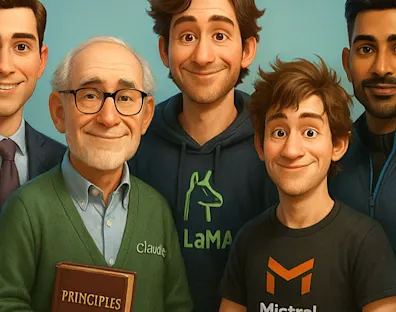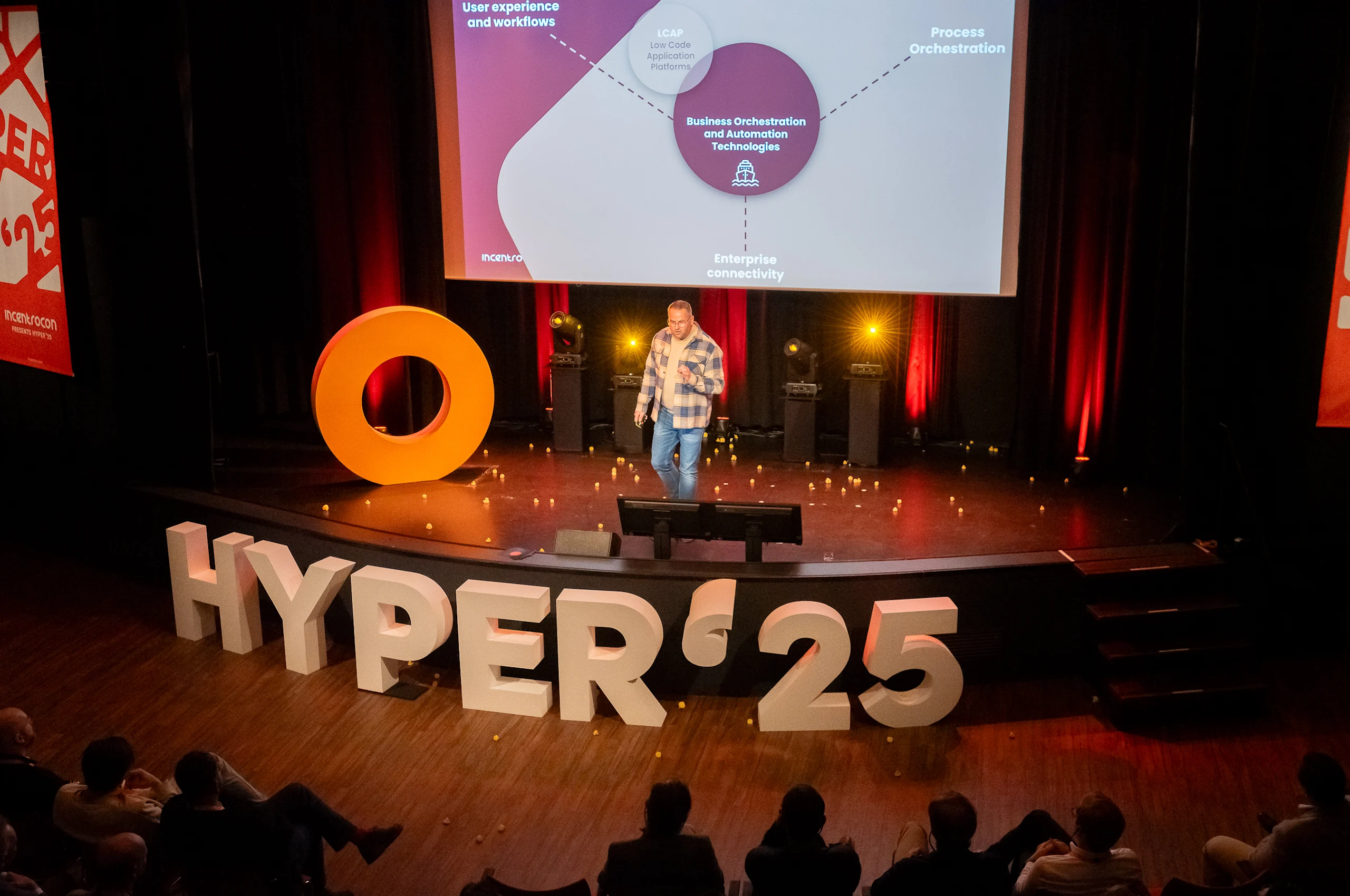
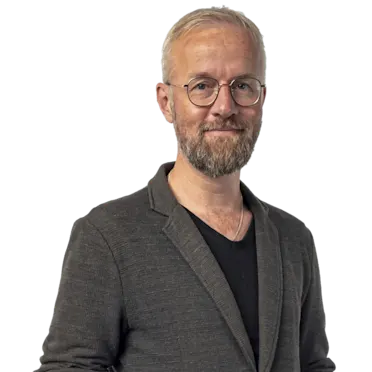
Robert Koot
Content Manager
4 min read
24 March 2025
BOAT: No IT Hype but Business-Driven Automation
As Incentro’s Field CTO and thought leader in hyper-automation, Floris Weegink kicks off Hyper ‘25. He dissects the application of AI, criticizes the use of Excel, and shares his enthusiasm for the BOAT concept. “I have been in this industry for more than twenty years, but this is the first time in my career that an IT trend starts with the business.”
As a field CTO, Weegink regularly visits companies. He begins his presentation with a personal anecdote about his experiences as a ‘one-day intern’ on a pilot boat in the Port of Antwerp. “A captain knows his ship, but a pilot knows the waters around a port. Without that local knowledge, a ship cannot safely reach its destination.”
He sees a parallel with the Gartner concept Business Orchestration & Automation Technologies (BOAT): companies need automation technologies, but without the right orchestration of processes, they get stuck. “Just like in shipping, a company needs a pilot to ensure processes run smoothly and efficiently. BOAT can fulfill this role in automation.”
BOAT brings various automation technologies together, but as a concept, it is much more than just technology, Weegink emphasizes. “BOAT is about orchestrating processes, not just about technology. This is the first time in my career – and I have been in the industry for 20 years – that an IT trend starts with the business.” He refers to earlier IT trends such as big data, cloud, or blockchain, which were all technically driven innovations rolled out by IT departments.
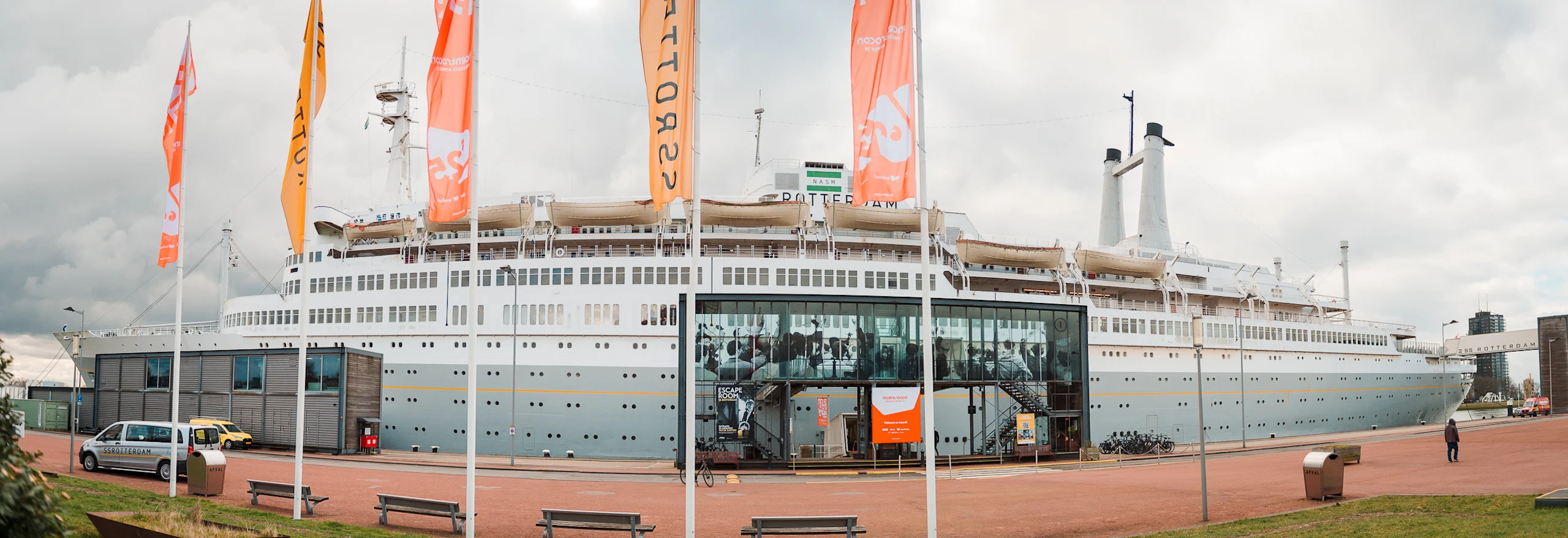
According to Weegink, this new approach is now more necessary than ever, because companies often purchase technology without a clear strategy and without considering the integration between systems and departments. This leads to fragmented solutions and processes that do not work together optimally. “Automation is not about technology, but about what you do with that technology in your process.”
Export to Excel? No, you can’t
Companies today have the most advanced (AI) technology at their disposal, yet strangely enough, they still cling to the old, familiar spreadsheet, he notes. “The question I always get is: can I export this data to Excel? I always say: no, you can’t, because what are you going to do with it? Create nonsense! Processes running on spreadsheets, data managed manually, and departments functioning as isolated silos—all of this carries significant risks.” BOAT helps companies structure data flows better and ensures that automation does not depend on loose Excel sheets and manual processes.
BOAT is designed to break down silos within organizations. It offers an integrated solution to connect systems.
Max van den Berk - Senior Analyst - Gartner
Create your own use case
BOAT is a term coined by the analyst firm Gartner, which is why Weegink invites a special guest to the stage. It is Max van den Berk, senior principal analyst at Gartner. Weegink asks him: when using BOAT, should you opt for an all-in-one solution (Best of Suite) or rather combine best-in-class tools (Best of Breed)? Van den Berk advocates for a Best of Suite approach, where companies benefit from an integrated platform. “BOAT is specifically designed to break down silos within companies. It provides an integrated solution to connect systems.”
The Gartner analyst presents an overview of IT vendors that offer technological building blocks for BOAT. One vendor comes from the world of low code applications, another from Integration Platform as a Service (iPaaS), and yet another provides platforms for Business Process Automation (BPA).
According to Van den Berk, there is no fixed rule for which type of vendor offers the best solution, but companies should primarily examine their own use case. Do you only need a front-end solution, a local RPA, or do you want to orchestrate end-to-end processes? BOAT is highly suitable for the latter, as it is a broad solution and not necessarily a deep solution.
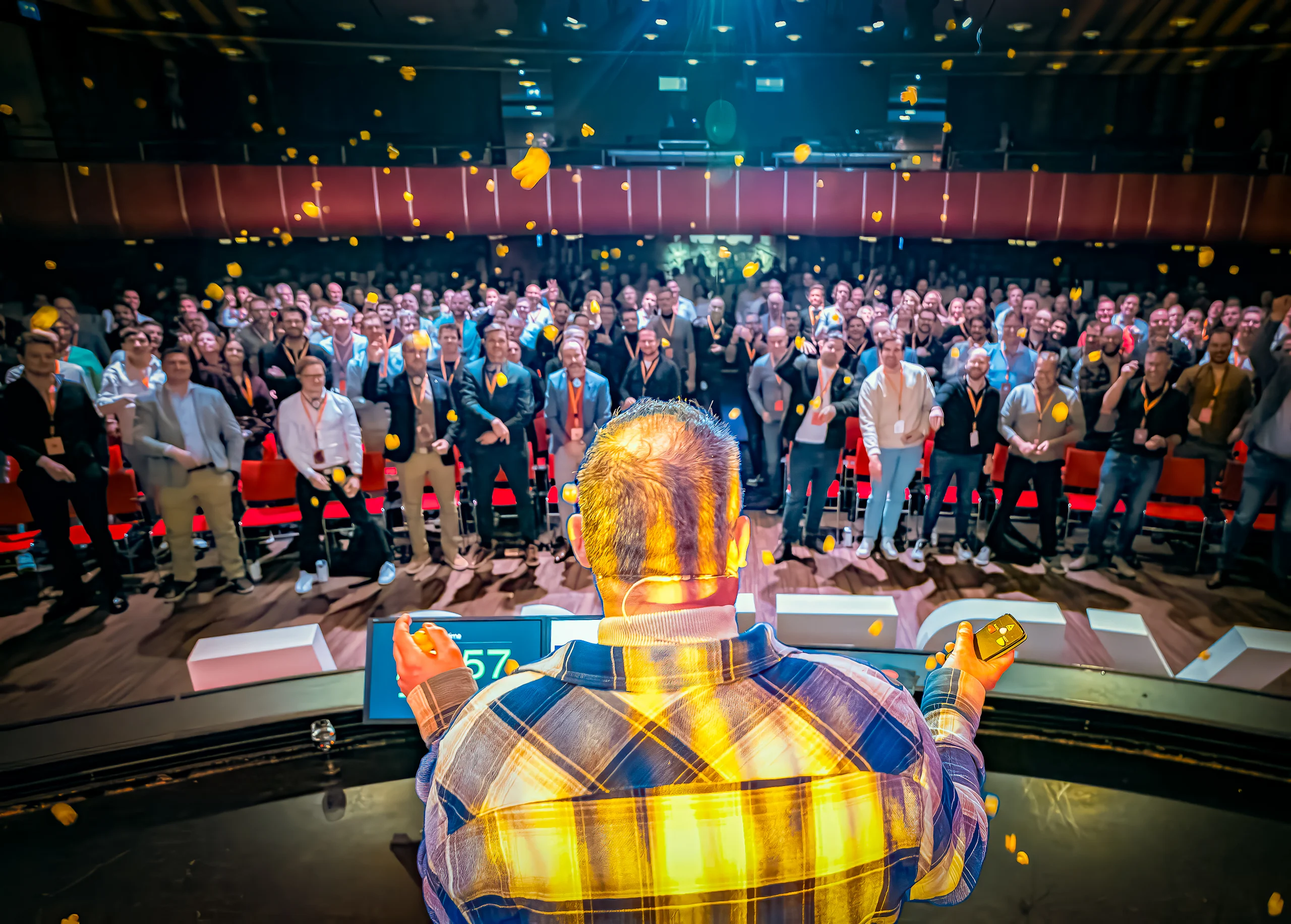
Don’t take the hype train
The stage discussion shifts toward AI and ‘agentic automation’, a topic where AI-driven agents can perform tasks independently. Weegink warns against ‘AI-washing’, where vendors label products as AI without adding real intelligence. "Always ask yourself: does this add value to your process?"
According to Van den Berk, AI’s strength lies mainly in interpretation and adaptability. “AI works best when applied to tasks with high variability. But as soon as processes require a high degree of determinism, a classical automation approach is often more effective.”
BOAT provides companies with an integrated approach to structuring automation more intelligently, breaking down silos, and optimizing processes. But its success does not only depend on the technology itself—it is about how companies implement and integrate it into their business processes.
Weegink concludes: "Automation is not a hype train. Look closely at your process and then determine which solution truly fits."
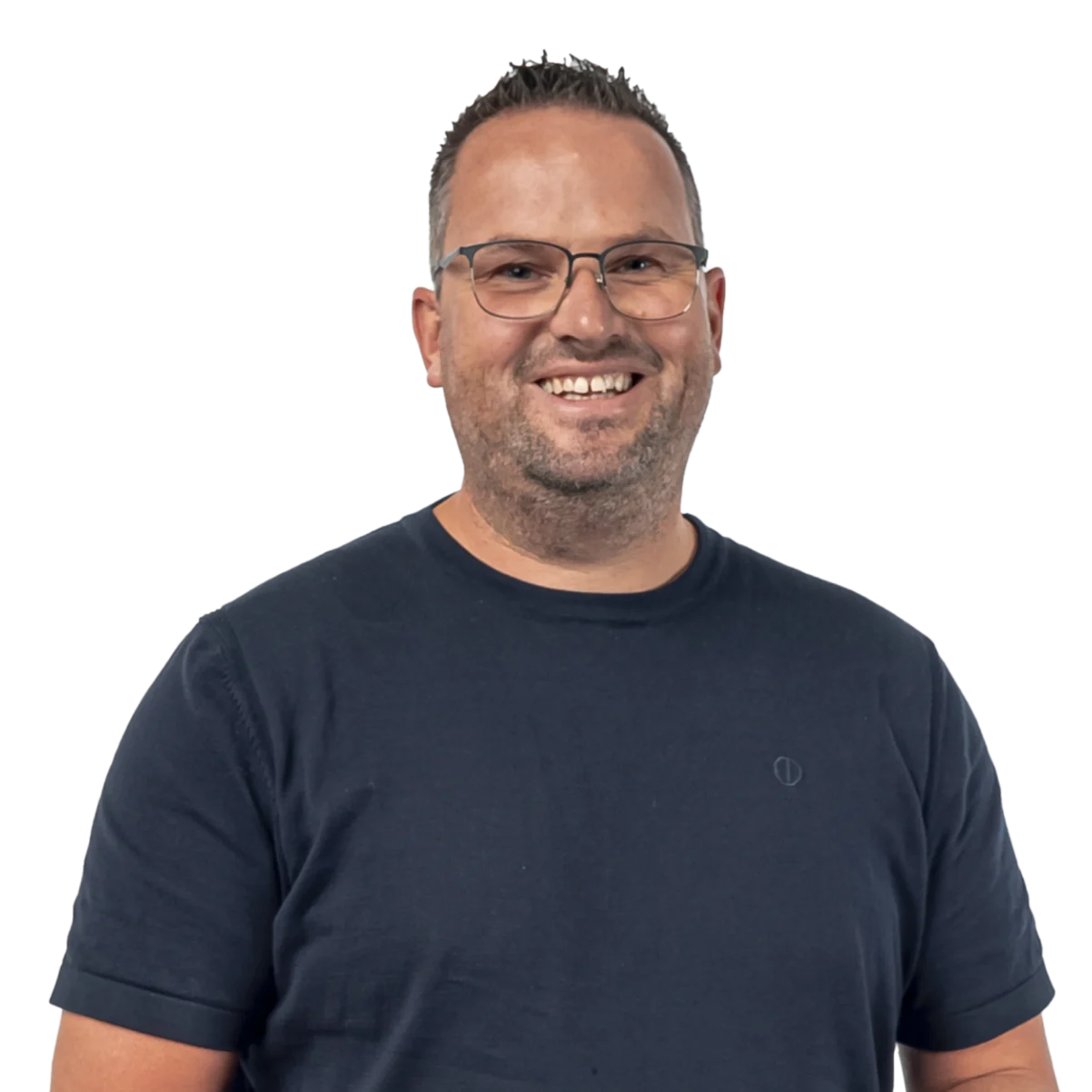
4 min read
BOAT is not a Swiss army knife, and that’s a good thing

3 min read
Why AI pilots often fail (and how you can prevent it)
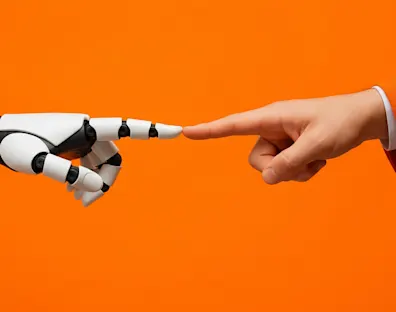
1 min read
Choosing tools in an overcrowded automation market
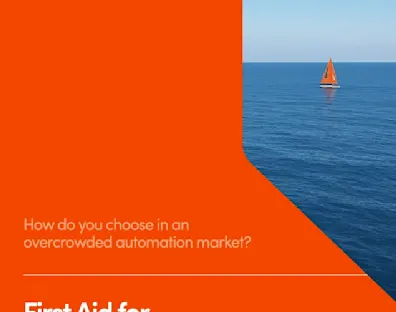
4 min read
The character of AI: Why does ChatGPT feel different from Claude or Gemini?
